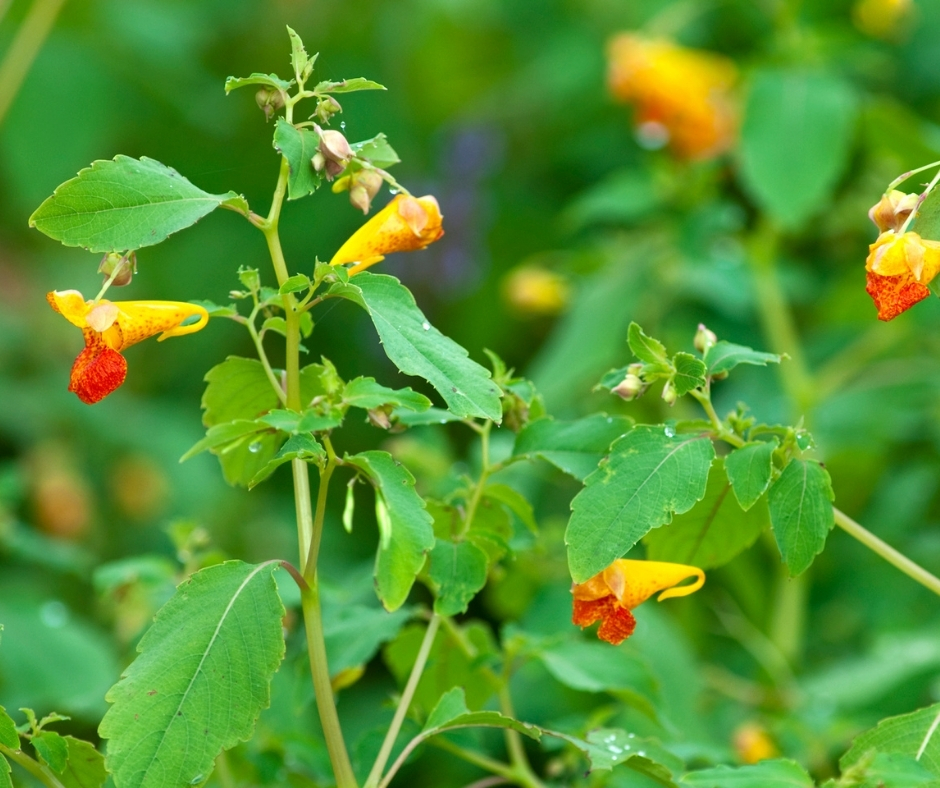Jewelweed Recipes
★★★★★

I have made the types of soap that you hot process and have to be super careful because of the lye. And its not my favorite thing to do. I enjoy the results, but not the process.
But a simple jewelweed soap can be made with two ingredients - melt and pour glycerin soap base and fresh jewelweed. The soap base is easy to find in craft stores or on amazon. I bought 5 pounds of clear melt and pour.
The tricky part is finding jewelweed. It grows profusely near me. It loves moist creek banks and grows where it is mostly shady.
I melted 2.5 pounds of soap base in my crock pot on high. Then I collected about 10 jewelweed plants (they come right up out of the soil - they like loose soil.) I used scissors to cut off the leaves and then cut the leaves up. I stirred these into my melted soap. I left the crock pot with the leaves and soap overnight on low.
Then I used a ladle to ladle soap into silicone molds. I could have poured it all into a wax paper lined casserole dish. The soap can easily be cut into bars after it cools. I did leave the plant material in the soap. I was afraid I would lose too much soap if I strained it out. In hindsight, I wish I had strained it. I could have ladled it through a strainer into the molds.
When the soap was cool I popped the bars out and wrapped them in plastic wrap. I now keep a bar tubside and my kids know when to use it. After any possible exposure to poison ivy. Glycerin soap is hydrating and gentle. And jewelweed is good for lots of skin issues. This soap could be used all the time and may be helpful for dermatitis or eczema.
Unfortunately, jewelweed does not keep well. It isn't something that can be bought dried; it must be used fresh and processed right away.
We have been using jewelweed spray for poison ivy outbreaks this summer with great success! It does seem to dry it out quite nicely.
To make jewelweed spray I harvested jewelweed plants and cut up the stems, leaves and flowers and covered them with grain alcohol. (You need a high proof alcohol because you are using fresh plant material which is higher in water than dried. Using a lower proof alcohol can make the water to alcohol ratio too high and increase the risk of it going bad.)
After 2 weeks I strained out the plant material and put the liquid in spray bottles. My kids prefer this to a salve because it isn't greasy or messy at all. (Though it will sting broken skin.) This will keep for a couple of years.
Enjoy!
~Mama to Many~
(Southern Louisiana)
12/11/2023
★★★★★
(TN)
12/11/2023
Dear Dalai Mama,
Yes, the slow and low heating will help extract the properties in the plants!
Enjoy!
~Mama to Many~
(USA)
05/31/2024
★★★★★
I also use fresh Jewelweed and distilled spirits to make a spray for poison ivy.
My husband loves the spray as it clears up the ivy rash very quickly and helps a lot with the itch.



